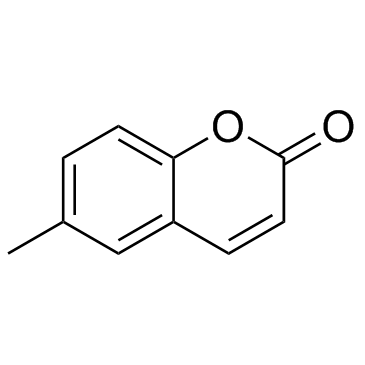Mechanism for 6-methylcoumarin photoallergenicity.
S Kato, T Seki, Y Katsumura, T Kobayashi, K Komatsu, S Fukushima
Index: Toxicol. Appl. Pharmacol. 81(2) , 295-301, (1985)
Full Text: HTML
Abstract
6-Methylcoumarin (6-MC), a synthetic fragrance material, has been reported to be photoallergenic both in man and in guinea pigs. To elucidate the possible mechanism of photoallergenicity, 6-MC in ethanolic solution was exposed to 200 joules/cm2 of long-wavelength ultraviolet (UV) ranging from 320 to 400 nm for 16 hr, and was examined for its contact allergenicity by means of a modified guinea pig maximization test. Strong allergic responses were observed, indicating that UV plays a catalytic role in forming contact allergens during irradiation. The solution was fractionated to isolate and purify contact sensitizers by gel-permeation chromatography and high-performance liquid chromatography. By employing mass spectrometry and proton and carbon-13 nuclear magnetic resonance, mono- and diethyl esters of 6-MC dimer were compounds identified which showed allergic reactions in guinea pigs sensitized with UV-irradiated 6-MC.
Related Compounds
| Structure | Name/CAS No. | Molecular Formula | Articles |
|---|---|---|---|
 |
6-Methylcoumarin
CAS:92-48-8 |
C10H8O2 |
|
Non-animal photosafety screening for complex cosmetic ingred...
2015-08-01 [Regul Toxicol Pharmacol 72 , 578-85, (2015)] |
|
A kinetic study of the main guaco metabolites using syrup fo...
2015-01-01 [PLoS ONE 10(3) , e0118922, (2015)] |
|
Stable isotope labeling method for the investigation of prot...
2014-11-01 [Toxicol. Sci. 142(1) , 239-49, (2014)] |
|
Perfume dermatitis.
1985-01-01 [J. Am. Acad. Dermatol. 12(1 Pt 1) , 1-9, (1985)] |
|
Phosphorylation of histone H2AX is a powerful tool for detec...
2011-06-01 [J. Invest. Dermatol. 131(6) , 1313-21, (2011)] |